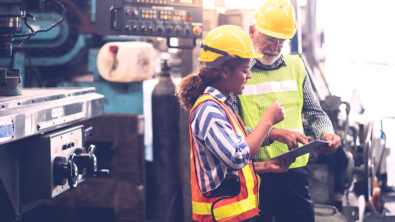Clean water solutions with the Industrial IoT

The Werner von Siemens Award acknowledges employee achievements that have a positive impact on Siemens’ business, company culture and society. This award recognizes landmark projects that empower our customers to shape a more sustainable world, make a positive difference for societies and capture the spirit of what it means to transform the everyday.
The winners of the 2021 Werner von Siemens Award, Adam Cartwright, head of IoT Application Delivery at Siemens Digital Industries UK, and Christian Frech, Partner Development Executive IIoT, and their team, worked on a solution focused on keeping waterways clean. The SIWA Blockage Predictor leverages the industrial Internet of Things (IoT) to identify sewer blockages before they happen, to prevent said blockages, and the flooding and pollution that they cause.
Let’s back up – a primer on sewer systems
There are two types of commonly adopted sewer systems—separated sewers and combined sewers. In separated sewers, waste and rainwater are collected in separate pipes. In combined sewers, waste and rainwater are collected in the same pipe system. This system is more efficient because it only uses one pipe, but it can also be problematic. Because of the combined pipe system, blockages and flooding can occur when large rainfalls and peak wastewater usage converge. Overflow points—nearby lakes and rivers—get polluted and flooded.
In order to avoid blockages and flooding, water management needs to be able to predict when and where a blockage might occur. Without insight into the wastewater network usage, rainfall data, and environmental surroundings, it can be very difficult to accurately predict these blockages. Currently, the alert systems in most sewers are set up to notify water companies whenever the basic threshold is reached. This can cause false alarms during expected high rainfall times, which can be costly and time consuming to deal with.
A stream of data
To solve this problem, the team used a data driven approach, with industrial IoT from Siemens, at the heart of the solution.
By collecting data through a sensor and taking that data into the cloud, the team was able to combine the sensor data with the rainfall data brought in from a third-party API.
This data is then analyzed through the SIWA Blockage Predictor Application – running on Siemens industrial IoT – which then identifies anomalies in sewer system behavior. By using an Artificial Neural Network to individually model each asset’s response to local rainfall, SIWA Blockage Predictor provides an early warning system for potential blockages, allowing companies advanced warning of problems before they develop into spillages.
A tried-and-true method
The solution is now deployed on 2,000 sites on 52,000 km of sewers, serving approximately 5 million people. In a trial of assets, the SIWA Blockage Predictor gave up to two weeks’ advance notice of blockages. The predictor also found nine in ten potential issues, making it three times more successful than the current system of predictions based on statistics rather than onsite data. By combining the ease of industrial IoT sensors with the knowledge of AI, this award-winning team has created an easy to implement solution to help keep our waterways clean.
For a deeper dive on the SIWA Blockage Predictor, check out this in-depth overview.
Interested in Siemens industrial IoT? Start for free, today.


